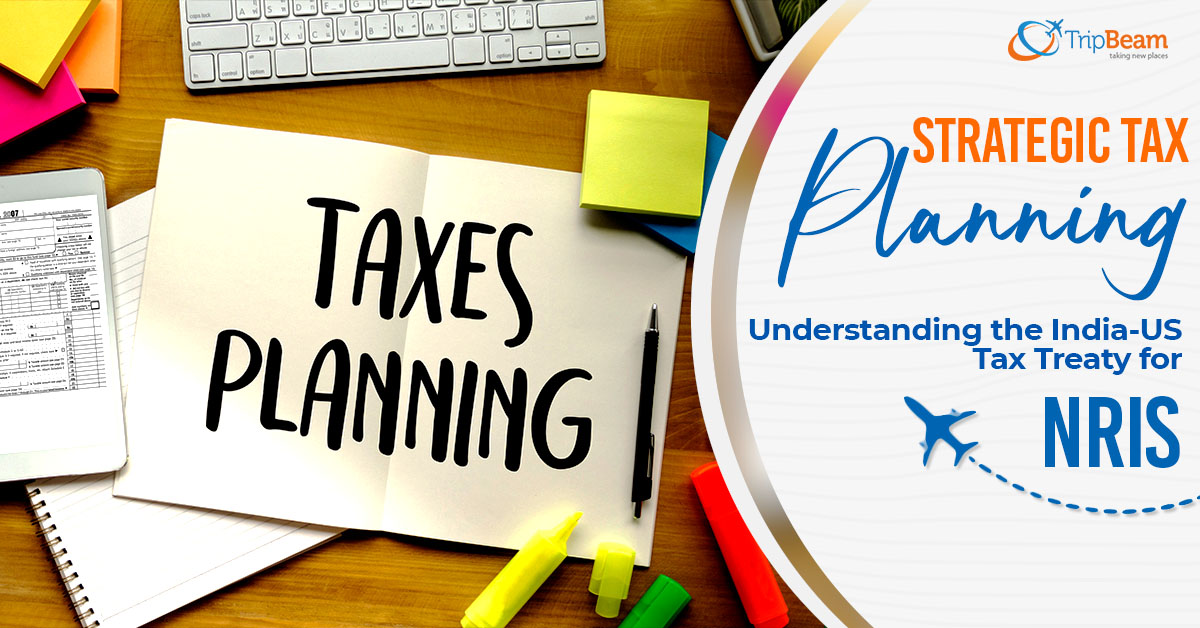
The United States is home to about 1.28 million NRIs and 3.18 million PIOs. The majority of them receive passive income in the form of dividends from investments, interest on bank accounts and savings, or profits from their Indian businesses. If the total income surpasses 2.5 lakhs (tax-free income), submitting a tax return becomes necessary. Book cheap tickets to India from USA with Tripbeam and enjoy a wonderful holiday. Are there any differences in the income tax regulations, rates, and exemptions for NRIs and Indian residents? The simple answer is yes.
Although all Indian citizens are liable to the Income Tax Act of India. Further, their residency status has a significant impact on their tax burden and the level of taxation. First, only income earned, presumed to be earned, or accrued from sources within India is subject to taxation for non resident Indians. They do not have to pay taxes on their profits abroad or report international assets.
Second, the India-US tax treaty shields NRIs from double taxation in circumstances when both countries have legal jurisdiction to tax specific types of income. Someone who is an NRI working and living in the United States. You must understand when to use the US-India tax treaty to reduce your tax liability. Here’s a look at the essential components of NRI taxation in India and the US-India tax agreement. If you want to look for different affordable flight options, visit Tripbeam.ca for cheap flight tickets from Canada to India.
Identifying your tax residency
The first step is negotiating the complexity of the tax system. This is to figure out your residence status for tax purposes. Both India and the US use different factors to determine an individual’s tax resident status. It is conceivable to be deemed a tax resident of both India and the USA in the same tax year. This makes you liable to taxes in both nations. This is where the India-US tax treaty, which includes features like:
- Residency Tie-breakers
- Tax credits
- Exemptions
- Deductions might help. But first, let’s clarify the residency status.
In general, taxpayers in India are classed as ordinarily resident or non-resident based on how long they spend in India. According to Section 6 of the Income Tax Act: “if you spend at least 182 days in India during a fiscal year, you are deemed a tax resident. PIOs and NRIs working in the United States retain their non-resident status for tax purposes if their visit to India does not exceed 181 days.”
An Indian citizen earning more than INR 15 lakh rupees is deemed to be a tax resident of India if their stay exceeds 120 days per year and 365 days in the four years before the amendment, which was made to Section 6 by the Finance Act, 2020. This applies to persons who are not required to pay taxes in any other country. You can discover the greatest and most recent offers on reasonably priced and cozy international flights if you’re looking for last-minute flights to India from USA.
Taxable income for NRIs
What is the definition of taxable income for nonresidents? Taxable income for NRIs is defined as any income generated, received, and accumulated in India. This is deemed to be created, received, and accrued in India. It includes wages, income from properties, business activities, and capital gains on assets in India. It will generate income from ‘other sources.’ This includes:
- Dividends on stocks3
- Mutual funds
- Interest on bank deposits/accounts.
Interest on NRE and FCNR accounts is tax-free. However, interest on NRO accounts is taxable. In case of traveling to India: It is very essential to understand Mastering India Trip Planning if you wish to visit a new location in India.
How does the US-India Tax Treaty assist Non-Resident Taxpayers?
The US-India Tax Treaty is a DTAA between the two countries. This offers a framework for cross-border taxation by establishing rules. Also, methods to prevent multiple taxation on the same income. It also provides several advantages for non-resident Indian taxpayers. The most notable are exemptions from double taxation and, in some situations, a lower tax rate. Non-resident taxpayers can choose between the IT slab rates and the treaty rate. It depends on whichever is low.
The treaty shields NRIs from being taxed twice on the same income in both India and the USA. This primarily benefits non-resident taxpayers. There are no significant disadvantages. However, you may find that the tax rate on Indian income is lower than the tax rate payable under the treaty. In this instance, NRI taxpayers may opt for local tax rates, which are more advantageous to them. You can also check the cheapest business class flights to India from USA as it will provide multiple options for travel.
Also Read: Traveling From The USA To India With Gadgets

